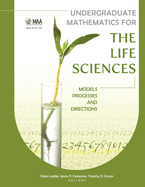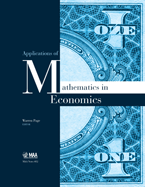 Undergraduate Mathematics for the Life Sciences: Models, Processes, and Directions Undergraduate Mathematics for the Life Sciences: Models, Processes, and DirectionsGlenn Ledder, Jenna P. Carpenter, Timothy D. Comar, Editors MAA Notes In this volume, authors from a variety of institutions address some of the problems involved in reforming mathematics curricula for biology students. The problems are sorted into three themes: Models, Processes, and Directions. It is difficult for mathematicians to generate curriculum ideas for the training of biologists so a number of the curriculum models that have been introduced at various institutions comprise the Models section. Processes deals with taking that great course and making sure it is institutionalized in both the biology department (as a requirement) and in the mathematics department (as a course that will live on even if the creator of the course is no longer on the faculty). Directions looks to the future, with each paper laying out a case for pedagogical developments that the authors would like to see. |
 Applications of Mathematics in Economics
Applications of Mathematics in EconomicsWarren Page, Editor MAA Notes Applications of Mathematics in Economics presents an overview of the (qualitative and graphical) methods and perspectives of economists. Its objectives are not intended to teach economics, but rather to give mathematicians a sense of what mathematics is used at the undergraduate level in various parts of economics, and to provide students with the opportunities to apply their mathematics in relevant economics contexts. The volume’s applications span a broad range of mathematical topics and levels of sophistication. Each article consists of self-contained, stand-alone, expository sections whose problems illustrate what mathematics is used, and how, in that subdiscipline of economics. The problems are intended to be richer and more informative about economics than the economics exercises in most mathematics texts. Since each section is self-contained, instructors can readily use the economics background and worked-out solutions to tailor (simplify or embellish) a section’s problems to their students’ needs. Overall, the volume’s 47 sections contain more than 100 multipart problems. Thus, instructors have ample material to select for classroom uses, homework assignments, and enrichment activities. |
| Purchase these books today in the MAA eBooks Store. |
Friday, July 12, 2013
New in the MAA eBooks Store
Subscribe to:
Post Comments (Atom)

No comments:
Post a Comment